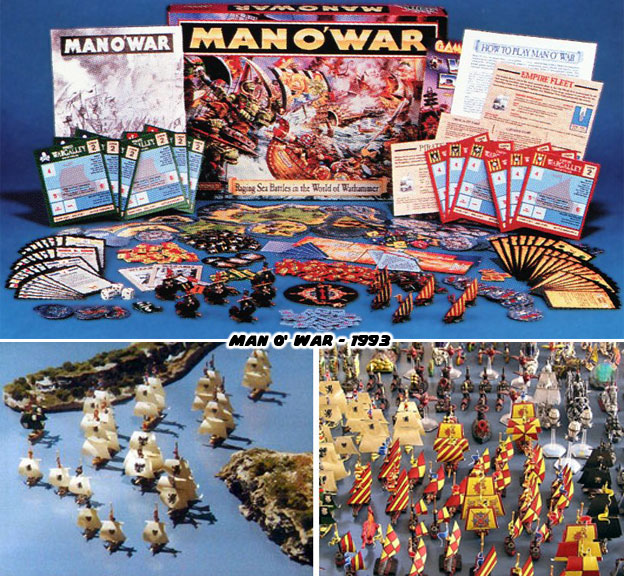
The battles out to sea were every bit as fantastic as the land skirmishes were if not more. The ships used by the Empire, the classic one not the Space Marine one, were exaggerated versions of the classic wooden warships we know and love. The biggest ones crewed an entire city's worth of soldiers and had hundreds of cannons lined up row after row on the sides. The biggest ships had enough firepower to cripple a small nation. When they did battle it was a sight to behold. Some of the enemies had equally impressive ships and featured their own special weapons. Some ships were crewed by the undead, they would row after opponents without tiring. Other ships were piloted by agents of Chaos, their ships were surrounded by clouds of poisonous gasses and the sails were pushed by strange magical energy. Some of the elvish ships unleashed dragons from their hulls, not unlike aircraft. The industrious dwarfs had ironclad ships and had small helicopters and balloons that they could send out to drop bombs on opponents. The Dark Elves had ships that were castles built on the backs of enormous sea dragons. It was a scale of fantasy and combat that hadn't been attempted by any other system. The Games Workshop magazine, White Dwarf, kept audiences up to date on the latest happening on the high seas of the Old World. We discovered that not only were the ships something to be reckoned with but there were sea creatures and even the god of the seas that the kingdoms had to do battle with.
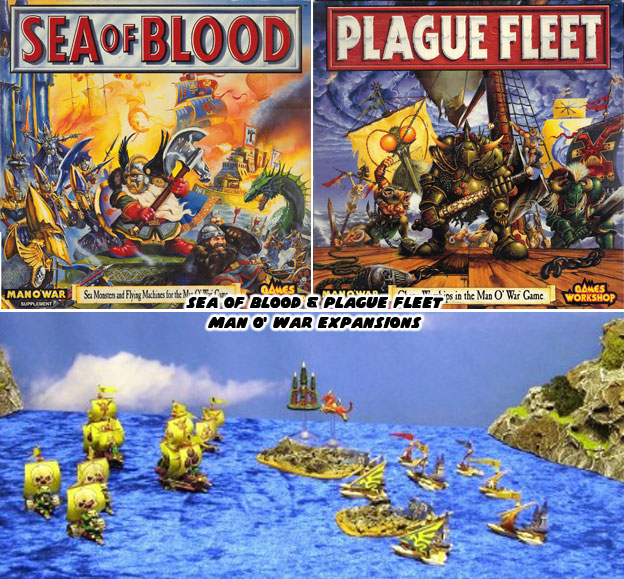
Just like the other games that the studio released during the late '80s and early '90s the entire experience was in the box. Friends could share the game, take it to their local hobby store and compete against the locals. The counters and "islands" were pre-printed cardstock, making it easy to imagine a ship raiding a port town, or setting up an ambush with your fleet on the far side of a volcano. All a gamer had to do was supply a table to enjoy the game, a blue tablecloth was optional. Hobbyists had tremendous fun creating three dimensional islands and forts as terrain pieces. Like the previous systems Games Workshop followed up with some expansions that added more unique elements to the title. The Plaguefleet and Sea of Blood expansions came out in 1993, right on the heels of the release of Man O' War. Thanks to the monsters and rules of magic the ocean became far more dangerous than any land encounter that could be found on land. Chaos had a tremendous presence on the sea and even the little seen Chaos Dwarfs got in on the action. Their ships belched black smoke, were loaded with armored rockets and stained the water around them. Everything they did was a gritty version of their heroic cousins. The grudges the two sides had was palpable. These were just some of the rivalries that could be settled in The system lasted for many years and built a cult-like following. Sadly it never got a chance to experience any success on the PC or home consoles.
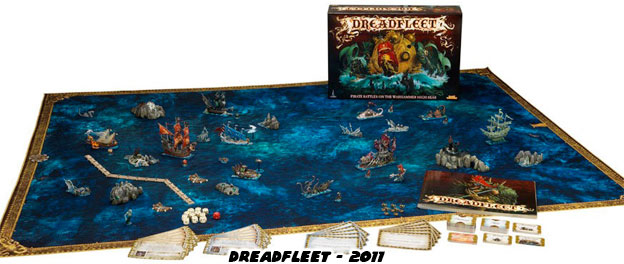
When Man O' War was discontinued there was a tremendous sense of loss in the community. Original systems, that had amazing miniatures, tight rules and a high level of production value were hard to come by. Most games of the nautical nature were flat card stock games that left much to be desired. It seemed that this would be the way things would have to be since not many studios were interested in naval tabletop games. That was until almost two decades later Games Workshop got a clue and decided to revisit the world of Warhammer Fantasy ship to ship combat. Senior designer Phil Kelly had an idea in his head that he had been honing for years. He had been working on a cast of heroes, of scoundrels and rouges that exist on the outskirts of the Warhammer universe. Unlike the generals that are celebrated in the lore of Warhammer these men and women and monsters that Kelly had dreamed up were instead the masterminds of the secret wars. These were the conflicts that are never remembered and never spoken of in Warhammer canon. They are the pirates rather than privateers that do battle against the forces of Chaos and evil races that would wipe humanity off the planet. Phil presented these characters in a novel titled DreadFleet. His game was named on that story. It was a manifestation of this unique vision of the Old World.
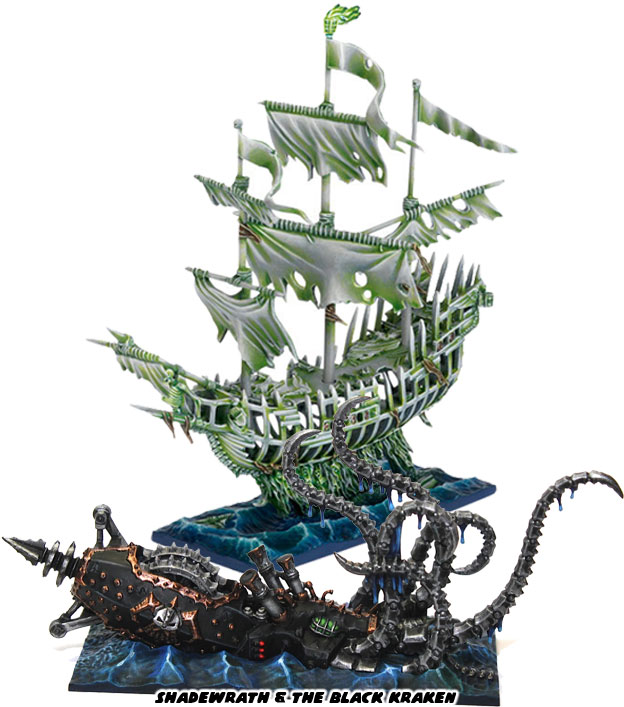
Mr. Kelly created a self-contained game in the tradition of the classic GW titles. Yet instead of having generic ships as there were in Man O' War this new game featured unique ships that represented the peak of each race. There was a ghost ship, a Vampire Count ship, an Elvish and Dwarf ship, the humanoid rat men known as Skaven had a ship made of the living copse of a giant fish, the undead legions from Nehekhara has a ship as well. There was even a mechanical submarine from the Chaos Dwarfs known as the Black Kraken. These would never be reproduced elsewhere and were in a scale much larger than the ships in Man O' War so that players could make out an insane amount of detail. There were beautiful models, for the good and evil sides, as well as terrain pieces all using the latest plastic modeling techniques. There were some playing card pieces but almost every important piece was represented with a miniature. The studio had even created a mat to play on, it was printed with brilliant hues that simulated a stormy ocean. It could be rolled up and folded without cracking or fading. I don't think something of that scale had been done by the company in almost 20 years! Dreadfleet was among one of the freshest game experiences in a generation and it really brought back all of the memories that made Man O' War such a great system as well.
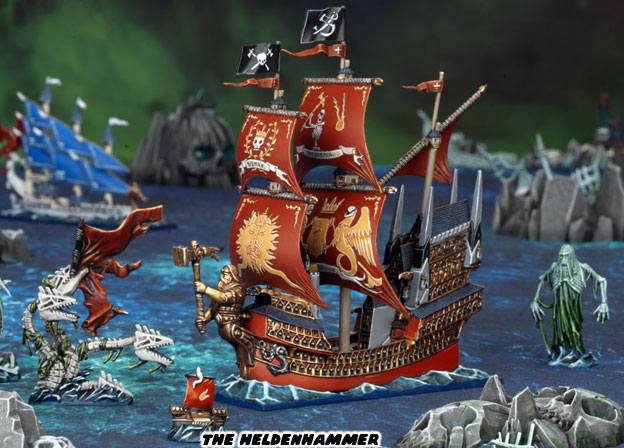
Dreadfleet won several awards and gained critical acclaim yet it never became the phenomenon that Games Workshop had hoped. Nonetheless it should be remembered for being a return to the elements that put GW on the map in the first place. With a number of classic Games Workshop systems getting mobile releases as well as getting adapted for the PC on Steam then perhaps there might be space to be reintroduced to the Man O' War. If not then at the very least there might be a chance to see Dreadfleet get a new lease on life.
The worlds that Games Workshop had created was fantastic no matter what era you looked at. It didn't matter if it was the ancient world of Warhammer or the futuristic world of Warhammer 40,000. If you focused on just one part of the continuity chances are you would find an amazing game to build out of it. The next blog will explore the systems that focused on these details. As always if you enjoyed this blog and would like to sponsor me please visit my Patreon page and consider donating each month, even as little as $1 would help make better blogs and even podcasts!

No comments:
Post a Comment